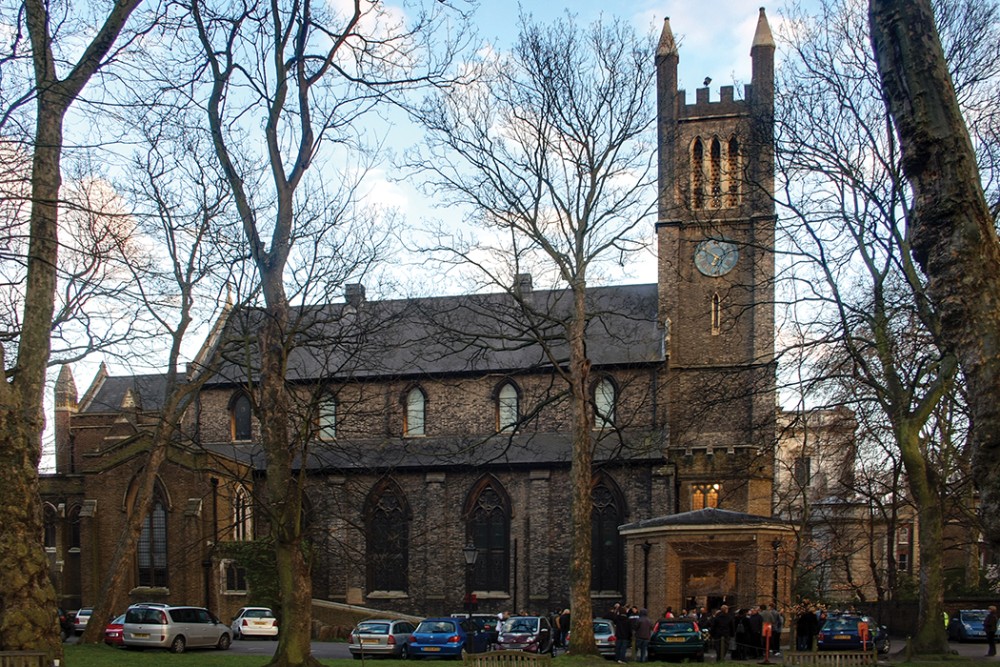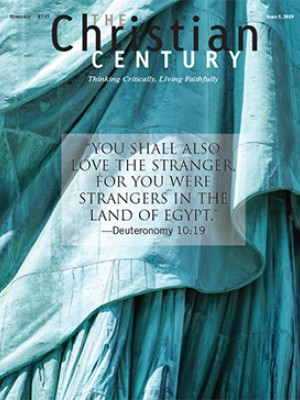Decline and revival in the Church of England
Future historians will identify the past quarter century as a time of real excitement and innovation.

British media regularly report the latest surveys of religious faith and activity in that country, and rare is the news that is not deeply depressing. So rapid has been the process of secularization that it hardly seems far-fetched to imagine a near future in which Christian faith in the country would be confined to recent immigrants.
Particularly hard hit is the Church of England, which in practice attracts only a tiny proportion of the national population on any kind of regular basis. Yet even among what seem to be the battered ruins of Anglican loyalty are surprising signs of life and even vigor. (I will focus here on England, as conditions in other parts of the British Isles differ in many ways.)
Read our latest issue or browse back issues.
The Church of England has long been divided between high and low church factions, between Anglo-Catholic ritualists and evangelicals. During the 1960s, a new force appeared on the scene in the form of a charismatic revival. Over the following decades, that charismatic impulse rose and fell in influence, but it received new infusions of support from the global church repeatedly. At different times, those overseas influences derived from transatlantic revivals, both in the US and in Latin America, but also from new immigrant populations from Africa and the Caribbean. These new influences reshaped many urban parishes, some of which became what an American would easily recognize as evangelical-charismatic megachurches.
The best known of these is the London parish of Holy Trinity Brompton, which attracts over 3,000 to its Sunday services. The life of Holy Trinity is based on intense small-group activities, organized through its 50 pastorates meeting in nonchurch locations. Holy Trinity is committed to church planting and has established seven offshoot congregations. The present archbishop of Canterbury, Justin Welby, has strong associations with the church and its clergy. HTB is famous for its innovative forms of outreach and evangelism, most spectacularly the Alpha course, which has reached tens of millions worldwide.
But HTB is by no means the only example of its kind. One very influential Anglican figure in modern times has been David Pytches, who in 1959 undertook mission work among the native Mapuche people of Chile and later became Anglican bishop of Chile, Bolivia, and Peru. Not for the first time in history, missionaries returned home with far more than they had originally taken with them.
At the end of the 1960s, Pytches and his wife, Mary, experienced the charismatic revival then sweeping Latin America, and they were determined to share this in England. In 1977, Pytches moved to St. Andrew’s Church in Chorleywood, which became a charismatic center that claimed many healings and blessings. That movement grew after 1981, when Pytches invited an American guest, John Wimber, the founder of the Vineyard churches. Wimber, incidentally, was also a formative influence on Justin Welby.
Out of those early initiatives grew a series of movements and networks that are today among of the best known centers of Anglican activism. In 1989, Pytches sponsored a Christian conference titled New Wine, which has since become the heart of a mainly Anglican network that involves several hundred clergy and church leaders. The connection between the wine metaphor and Wimber’s own Vineyard is not coincidental, although Pytches and his allies made the decision to remain mainly within established structures.
So successful was New Wine that it developed a number of spinoffs, including Soul Survivor, which is targeted at teenagers and young adults. Each year, perhaps 70,000 have attended one or more of the sequence of summer festivals organized by the various networks. Sadly, this year’s Soul Survivor festival looks like it will be the last.
However important HTB and New Wine are in their own right, they are only the most visible faces of a larger movement within the church. Among the various emerging institutions, one creative example is London’s St. Mellitus theological college, where students combine highly liturgical Anglo-Catholic services with evangelical-charismatic devotion and praise music. Over the past decade, the church’s hierarchy has enthusiastically encouraged experiments in ministry, officially termed Fresh Expressions.
When future historians write the history of the Church of England, they will identify the past quarter century as a time of real excitement and innovation, when new global ideas were imported and developed local roots. New vineyards have indeed flourished.
Yet not even all this energy has been able to prevent or slow that powerful underlying trend of religious decline. Conservative and evangelical Christians have found themselves running unsuccessfully against the overwhelmingly liberal currents within the larger society, especially in matters of sexuality and gender. Hopes for a wide-ranging religious revival seem futile. Charismatic Anglicanism will not disappear, but it is most likely to find a future as part of a broad coalition of immigrant churches, as the children of empire reclaim the old homeland.
A version of this article appears in the print edition under the title “Creative remnant in England.”






